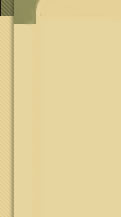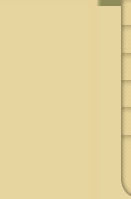|
Bondeau Water Project Journal
NOV 3
Steve and Rick departed for Haiti at 3AM. Steve drove to the FLL airport where the adventure began almost as soon as they arrived. They could not check-in at curbside because they had too many pieces of luggage and two were over weight. It turns out JETBLUE only allows 2 pieces of luggage per passenger and a maximum of 50LB. No exception even with explanation of mission work and many many pleasant smiles. After considering canceling the trip, we had a lengthy negotiation (at 4AM) and it was easier buying an extra oneway ticket, which allows 2 pieces of luggage. We juggled some of the heavy items and at last everything was checked in. The 1hr50min flight was very pleasant and we soon landed in PAP.
With 10 flights into PAP, every landing has been followed by an every changing customs and immigration process. The airport has seen many improvements. The new facilities are being expanded next to the remnance of the older terminal broken since the 2010 earthquake. We were quickly greeted by NAME who escorted us into the VIP arrival area and we were effortlessly processed through immigration. We took a private stairway down to the luggage claim area where a porter was already collecting our 6 pieces. We were so relived when we recovered the last piece which was so important to the work we were going to do. We processed through customs with just a minor delay and NAME handed us off to NAME who was waiting with a car to take us to Aimond's house which was about 20 minutes from the airport. Luck was with us as the PAP morning rush hour was heading in the opposite direction.
Aimond greeted us at the gate to his property and after introductions we had the car packed with tools and we were on our way after a shor stop to buy a car battery, oil and some supplies we were off to Bondeau.
As PAP faded in the rearview mirror we were heading into the open rural country which is such a contrast to the endless cement and traffic in PAP. The 3 hour ride to Bondeau took us through farmlands, small villages and open country side. It always make me wonder why anyone would choose to live in such crowded conditions when clean air and open land is just 1 hour away. I assume, as with most of us, we are confined to live wherever we can find work. Otherwise we might all be living in Tahiti.
We arrived in Bondeau at 12:30 where we greeted by Pastor Phanord. We offloaded all our bags into the guest house and quickly sat down to a welcomed meal of hotdogs and French fries and a cold lemonade. As we regained our strength we made plans for the brief time we would be on site. After our meal we quickly got busy working on the generator. We changed the oil, installed new filters and fitted the new muffler and exhaust pipes. We then proceeded to take measurements on the ground and we began marking the locations for our first geologic survey transect. Daylight soon faded and we retired to the guesthouse for dinner of fried chicken jon-jon rice and plantains where we gave thanks for the meal, our safe travels and the work were about to do. After dinner we went upstairs to the porch living area and we discussed our plans over some cold prestige beer. Soon after exhaustion set in and we all turned in for a good nights rest knowing we would get off to an early start tomorrow.
NOV 4
Rick was first up at sunrise waking to the call of roosters and an wale from a occasional donkey. He walked the property taking pictures in the early morning light. He met Eyvnel who was curious to hear about what work they were going to do. Everyone was up by 6:30AM having breakfast of coffee, bread, banana and eggs while discussion turned to work.
We laid out the first 120meter transect at 5meter spacing for the 24 electrodes. The local men helped drive rebar into the ground to soften the rocky backed soil. We used machetes to cut back brush, crawled under a barbed wire fence and laid out the wires for the electrodes. After some very hard work we were ready to begin the test. As we made our first run using the data logger we all cheered as all 24 electrodes passed the initial test and the logger began collecting data. Rob Baker, who generously rented us the data logger and electrodes told us to expect failed readings the first few times as we learn how to properly set the sensors. We happily watched the logger take readings and then took a well earned break while we waited for the first transect to complete.
After about 1 hour all readings were finished and we then had the difficult task of removing the first 12 sensors, retrieved the wires and then proceeded to relocate the sensors further down the line for the first roll-along. Again we were lucky to see all 24 sensors past the test and the logger started taking readings.
After 45 minutes the 2nd transect was complete and we started moving the next 12 sensors down the line for our 2nd roll-along. This last leg of the transect proved to be a challenge as we stepped through another barbed wire fence into the adjacent property and had to clear more brush to lay the sensors. Having gained experience we made fast work and were finished by noon in time for a late lunch. We enjoyed a delicious meal of rice with peas, meatballs and plantains. Before we became too relaxed we returned to the field and started all over again resetting the sensors to their original location and made a 2nd run on transect number one. The first run was taken using Dipole-Dipole method and the second run was taken using the Wener method. Having marked our original holes we made quick work of the second run and we completed 2 roll-alongs by 3PM. Feeling good about what we accomplished we took a quick break trying to cool off and gain some strength.
After our break we moved on to the location behind the guest house for the second transect. We laid out 24 electrodes spanning the full length of the property. It was much easier but there were small shacks, chickens, pigeons and dogs to contend with as we drove the electrodes into the ground. Again we were luck to have all 24 sensors pass the test and the logger began taking readings. After the first run, since there wasn't enough space to be able to do a roll-along we immediately restarted the logger for the second reading without having to move any sensors. We were able to finish all the data collection just as the sun began to set. We collected the equipment, paid the workers for a days pay and then gathered in the guest house for dinner.
NOV 5
|







